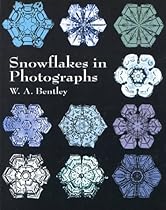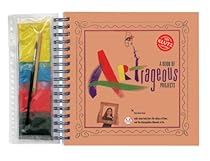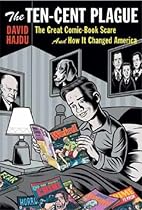Thom Filicia Style: Inspired Ideas for Creating Rooms You'll Love
"I'm a democratic design snob. I see it as my mission to help stamp out boring, unimaginative interiors. But I also love people, having fun, and what I do for a living. I think a fabulously styled place is achievable by everyone. Think of me as your decorating wingman."
Thom Filicia, whose one-of-a-kind makeover genius gained national attention through his starring roles on Queer Eye for the Straight Guy and Dress My Nest, offers the ultimate handbook for creating gorgeous interiors that showcase your unique personal style. Those who have witnessed Thom's remarkable makeovers on television already know about the much-anticipated reveal moment when the emotionally overwhelmed homeowners are struck speechless by the miracle he has created. The same miracle is now possible for your home, with the secrets and tips contained in Thom Filicia Style.
With his trademark wit and friendly voice, Thom deconstructs how he works his magic and provides pages of invaluable advice, inspiration, before-and-after photos, case studies, floor plans, and product information. His approach will help you elevate your personal aesthetic by strategizing the best ways to make the most out of every space. From his work on a Manhattan loft to a suburban family home, Thom brings a fresh and invigorating vision to the way we live -- a vision that can apply to homes and decorating budgets of any size.
Demystifying the decorating process one step at a time, Thom has filled this guide with everything you need to create the perfect interior. Thom Filicia Style is like having the designer himself on hand to take care of all the details.
Product Details
Amazon Sales Rank: #5825 in BooksPublished on: 2008-10-14Original language: EnglishNumber of items: 1Binding: Hardcover224 pages
Editorial Reviews
Review
"I can't imagine anyone who has more fun at work than the dashing, devil-may-care decorator Thom Filicia -- and he brings that passion to the pages of Thom Filicia Style, the go-to guide to navigating the world of design. With indispensable information, expert tips, lush photos, and a wicked wit, he takes you on a no-nonsense journey whose destination is a confident new look for your home."-- Margaret Russell, editor in chief, Elle Decor
"Thom Filicia is a genius, effortlessly mixing materials and eras to create spaces that are both hypersophisticated and extremely livable. Somehow, he never loses sight of the human being amid all that fabulous furniture and fabric. So yeah, this book is drop-dead gorgeous, but it's also warm, friendly, and down-to-earth -- just like its author. Finally, a designer book that truly demystifies the process for us mere mortals."-- Sara Gray Miller, editor in chief, O at Home
"From apprenticing with legendary designer Albert Hadley to finding television celebrity, Thom has mastered his own brand of eclectic, organic, American-chic -- and is generously willing to help a broader audience experience, live with, and love design, too. His first book is not only a visual treat but also a friendly, easy-to-navigate guide crammed with useful tips, from 'every room needs a surprise' to 'lose the matchy matchy-ness.'"-- Cindy Allen, editor in chief, Interior Design
"Thom Filicia is like a superhero of style. He crusades against the scourge of bad taste by empowering regular citizens to look within themselves and embrace their inner decorator. His delicious new book spreads the gospel according to Thom: Don't Worry, Be Fabulous!"-- Mayer Rus, design editor, Los Angeles Times Magazine
"An insider who's invited everyone to the party, Thom has created a book that's part luscious page-turner, part hilarious autobiography, and crazily useful. I don't know if I want to keep it on the coffee table, bedside table, or in the design library, but I do know I want to keep it."-- Sara Ruffin Costello, creative director, Domino
"Thom is a total inspiration to me! The fact that he could think on his feet with such brilliance and accessible practicality on the groundbreaking Queer Eye for the Straight Guy was a revelation to me. To be able to see a diamond in the rough the way Thom does with forlorn rooms is sheer magic. Beyond that, Thom is about the nicest guy you will ever meet. He is brimming with enthusiasm and talent, with a fresh, elegant eye, and this book illustrates how far that goes. This book will be invaluable for anyone who cares about design and how it can actually empower your life."-- Wendy Goodman, design editor, New York
"In this spirited, droll, and informative romp through his career, work, and design philosophy, Thom Filicia shares with readers his inspirations and his pragmatic solutions for creating environments as suave and engaging as himself."-- Hamish Bowles, editor at large, Vogue Living
About the Author
Thom Filicia, since gaining fame as the quick-witted and charming interior designer on the Emmy-winning television hit Queer Eye for the Straight Guy, has emerged as one of today's most influential and respected interior designers. Host of the Style Network's top-rated show, Dress My Nest, Thom's projects and ideas have been featured everywhere -- from The Oprah Winfrey Show to The New York Times, from Elle Decor to W, and from House Beautiful to InStyle.
Before being catapulted into the national spotlight, Thom established himself as a major player in the design industry through his day-to-day work. After earning his B.A. in design from the prestigious School of Visual and Performing Arts at Syracuse University, he joined Parish-Hadley, one of the country's most distinguished interior design firms. He then worked for renowned designer Jeffrey Bilhuber before founding Thom Filicia, Inc., in 1998. He was named one of House & Garden's Top 50 Tastemakers, one of House Beautiful's Top 100 American Designers, and was nominated for an Emmy Award for Outstanding Art Direction for his work on Queer Eye. Thom's far-ranging commissions have included everything from designing the tents for the Olympus Fashion Week, to the W Hotels in Los Angeles, San Diego, and Atlanta, and to the United States VIP Suite at the World's Fair in Aichi, Japan.
Customer Reviews
A Good D-I-Y Guide
Packed with lots of achievable ideas, this is best when used as a Do-It-Yourself guide. After just a few words of introduction by Albert Hadley, a bio complete with time line is given. Mr Filicia worked as an intern at the legendary interior design firm Parish-Hadley before going on to the office of Robert Metzger and then Jeffrey Bilhuber. He gained critical acclaim from the design magazines when opening his own office, but celebrity status came when he was one of the stars of the cable TV series "Queer Eye for the Straight Guy".
The projects, often accompanied with a floor plan to show the layout, tend to feature furniture of the hand-me-down variety combined with accessories that often appear more like props to make an interesting photo than to really contribute to the design of the room. Not a bad approach in decorating one's own home, to be sure. This is a good book for young marrieds looking to achieve some style on a budget. But for those wanting to learn the finer points of interior design, there are better books for study.
Different 
I really liked this book. It has some fresh ideas and Thom Filicia is always rockin' the interiors he creates. The only thing I would change is to have even more photos.
Totally Thom
If you enjoy Thom Filicia's creative designs on "Queer" and "Dress My Nest", you will absolutely love this book. It's a book that you can look at over and over and it is filled with great ideas, fab pictures and great insight into Thom's life and design philosophy. Two enthusiastic thumbs up.
Price: $23.10 & eligible for FREE Super Saver Shipping on orders over $25. Details
Related Links : Product by Amazon or shopping-lifestyle-20 Store
![]()
![]()
![]()













